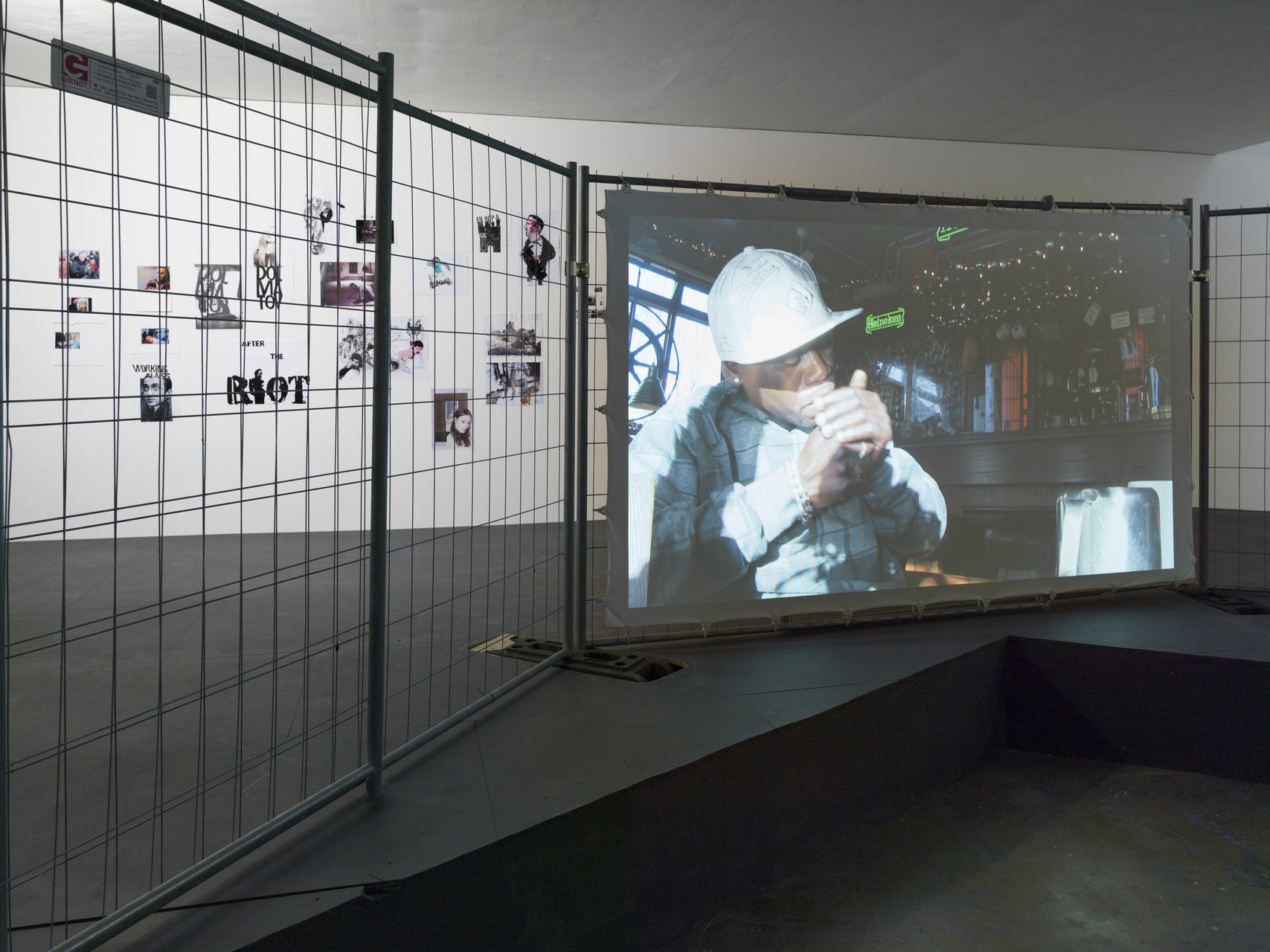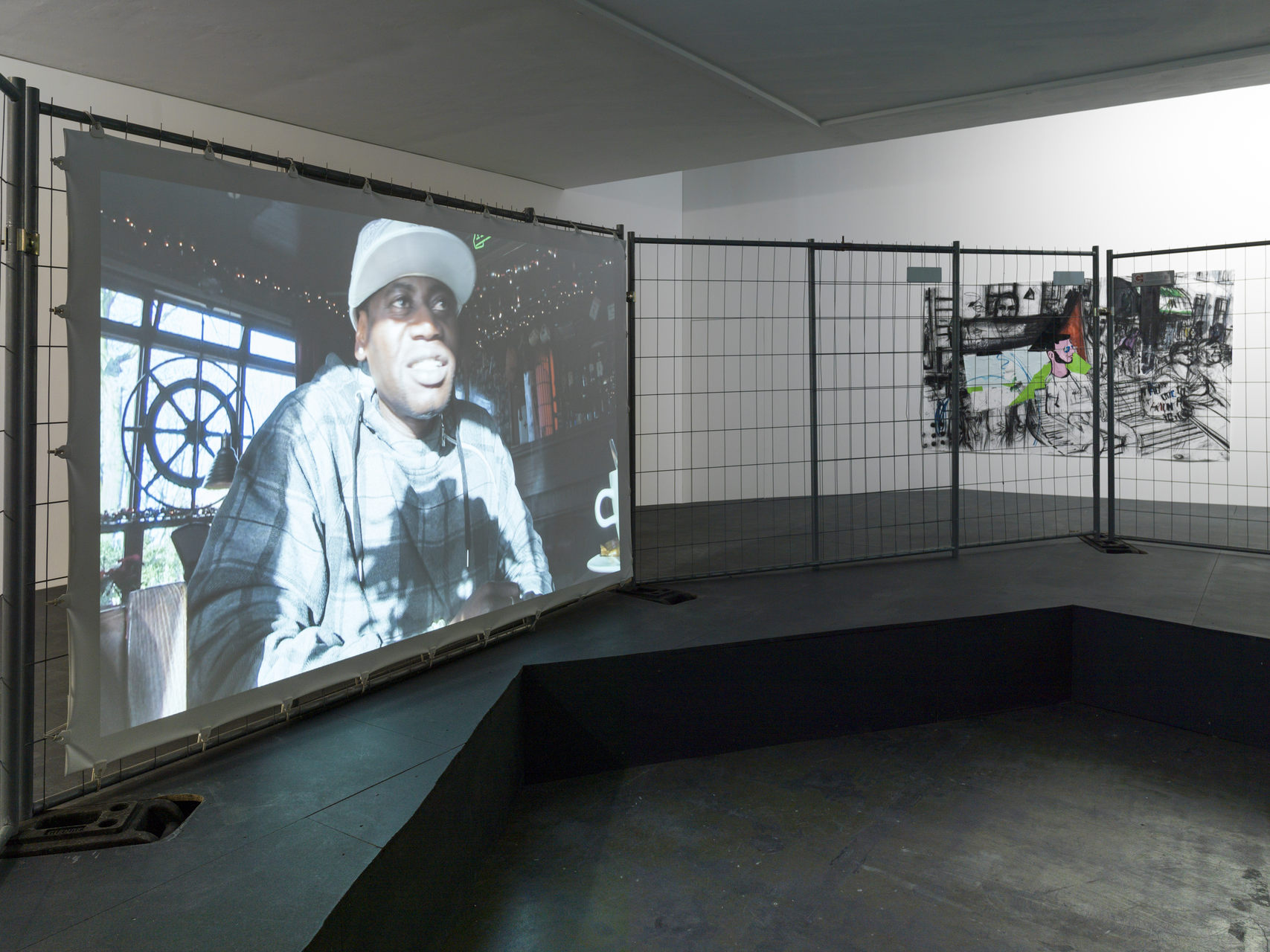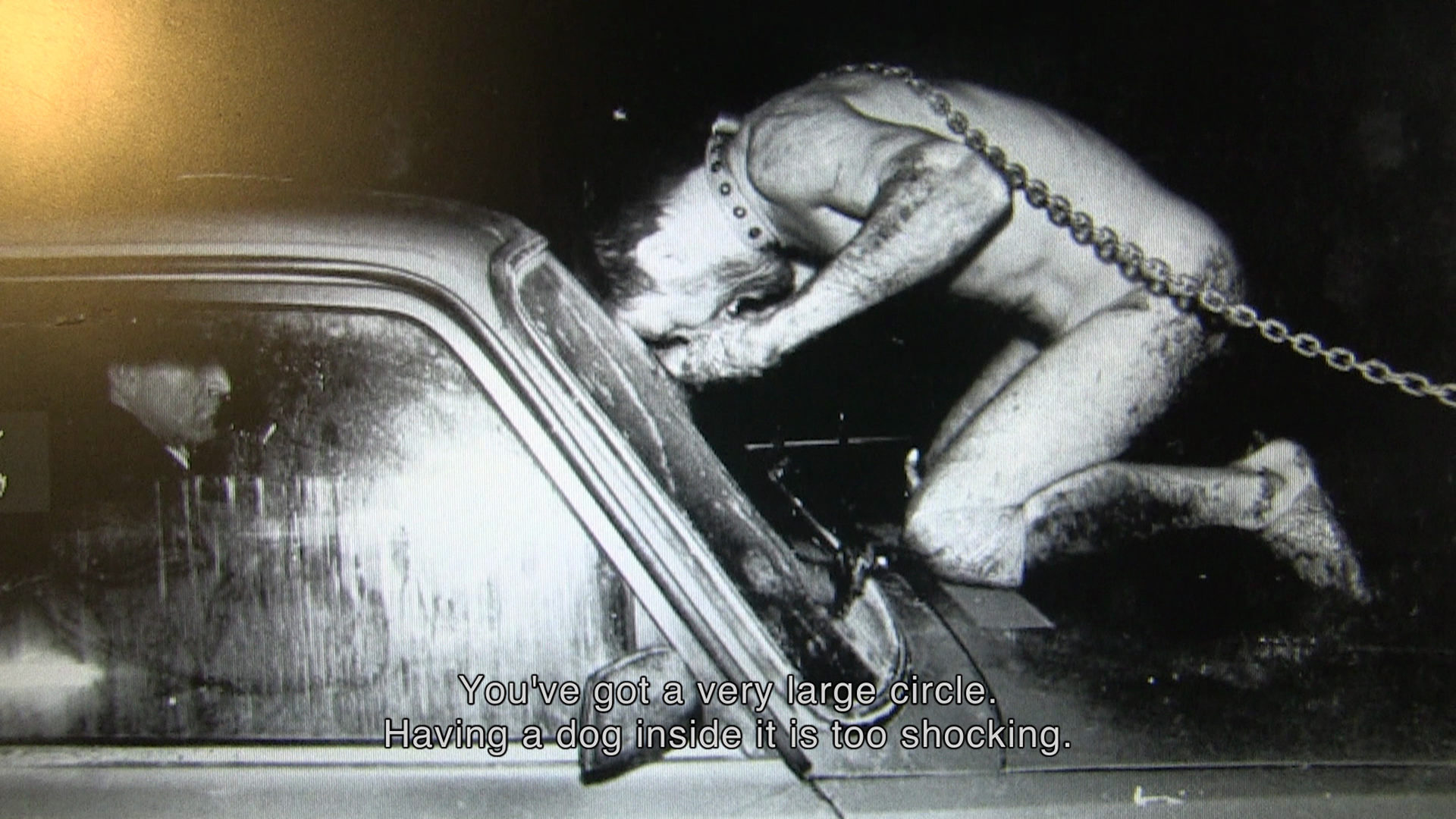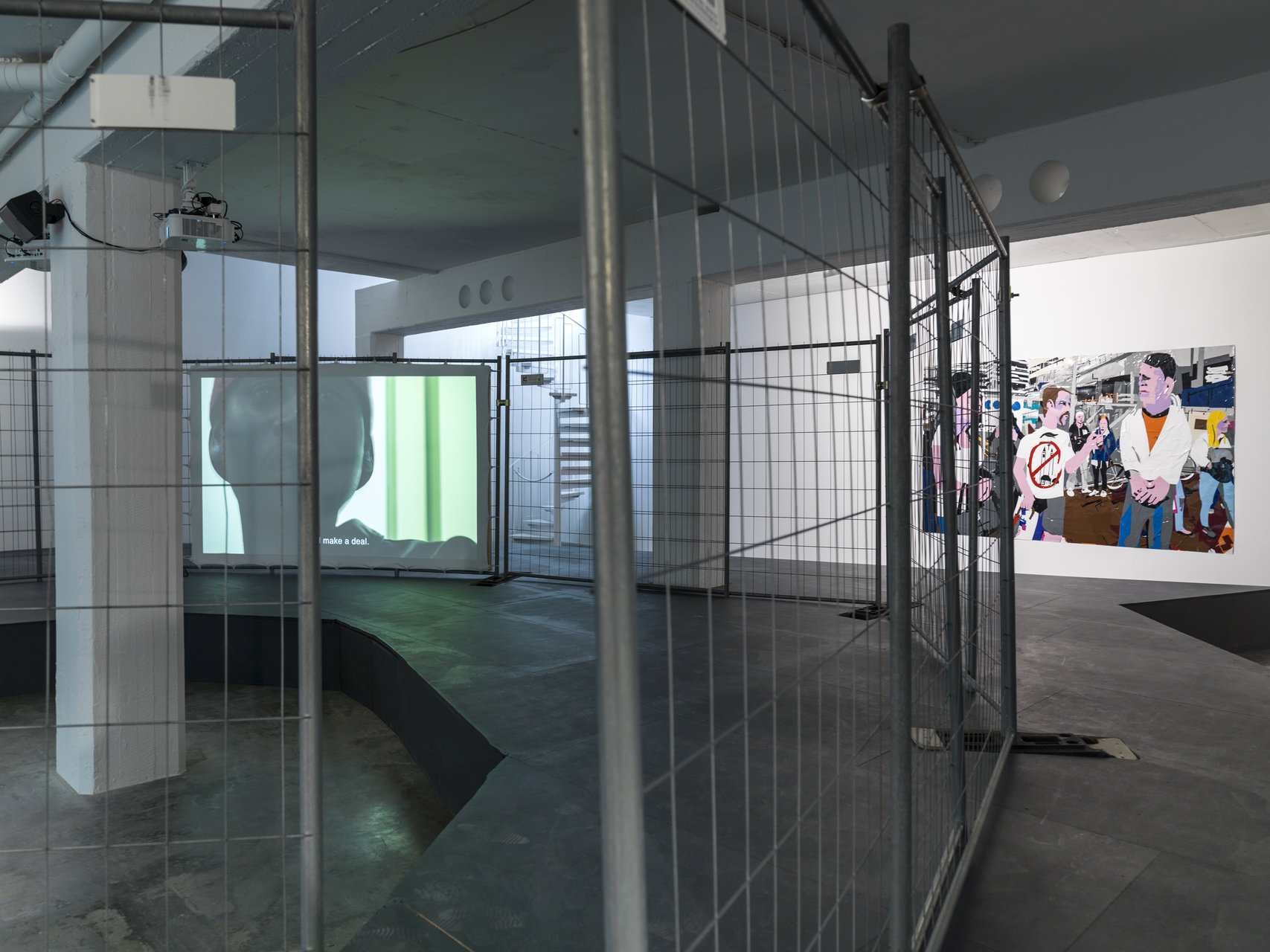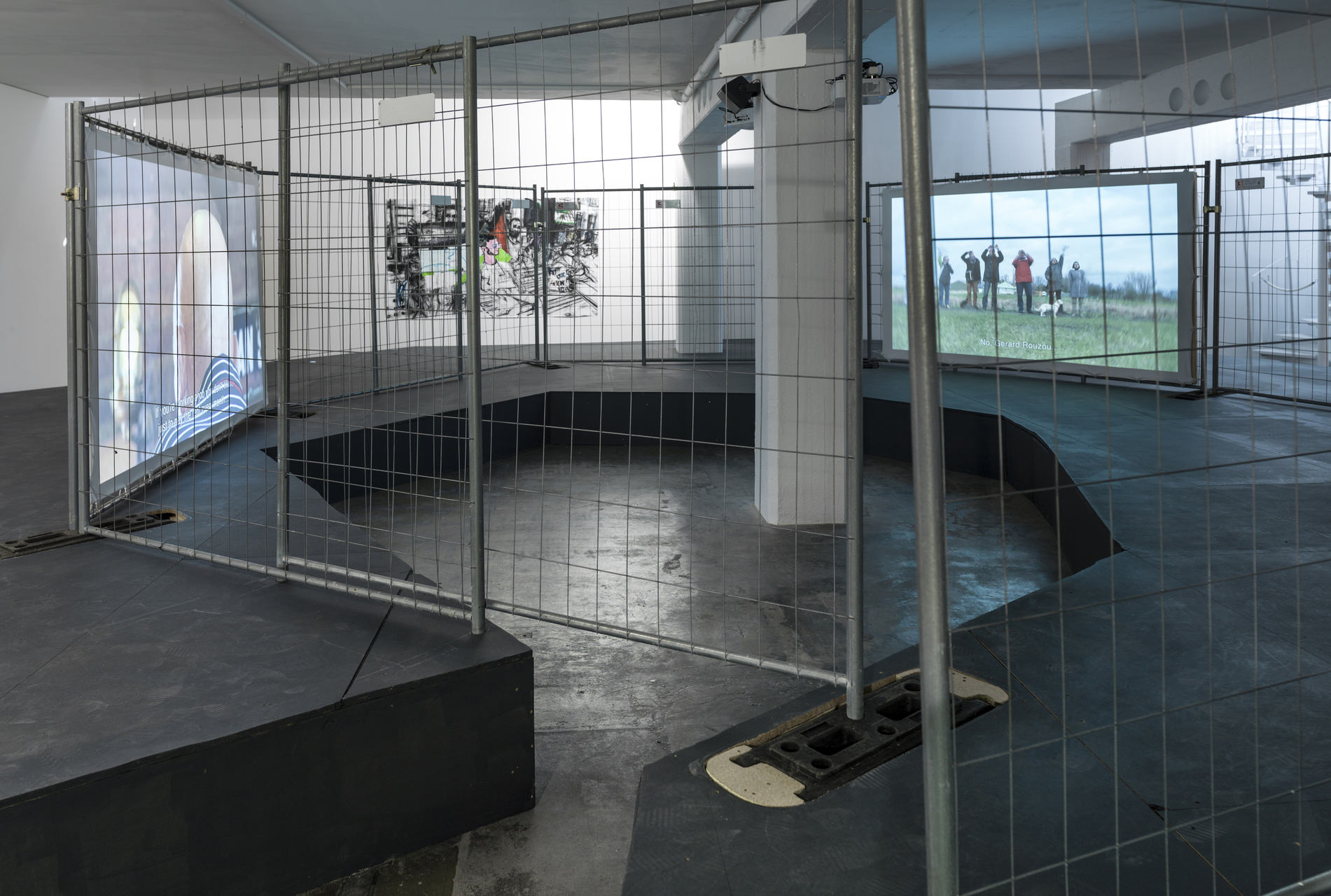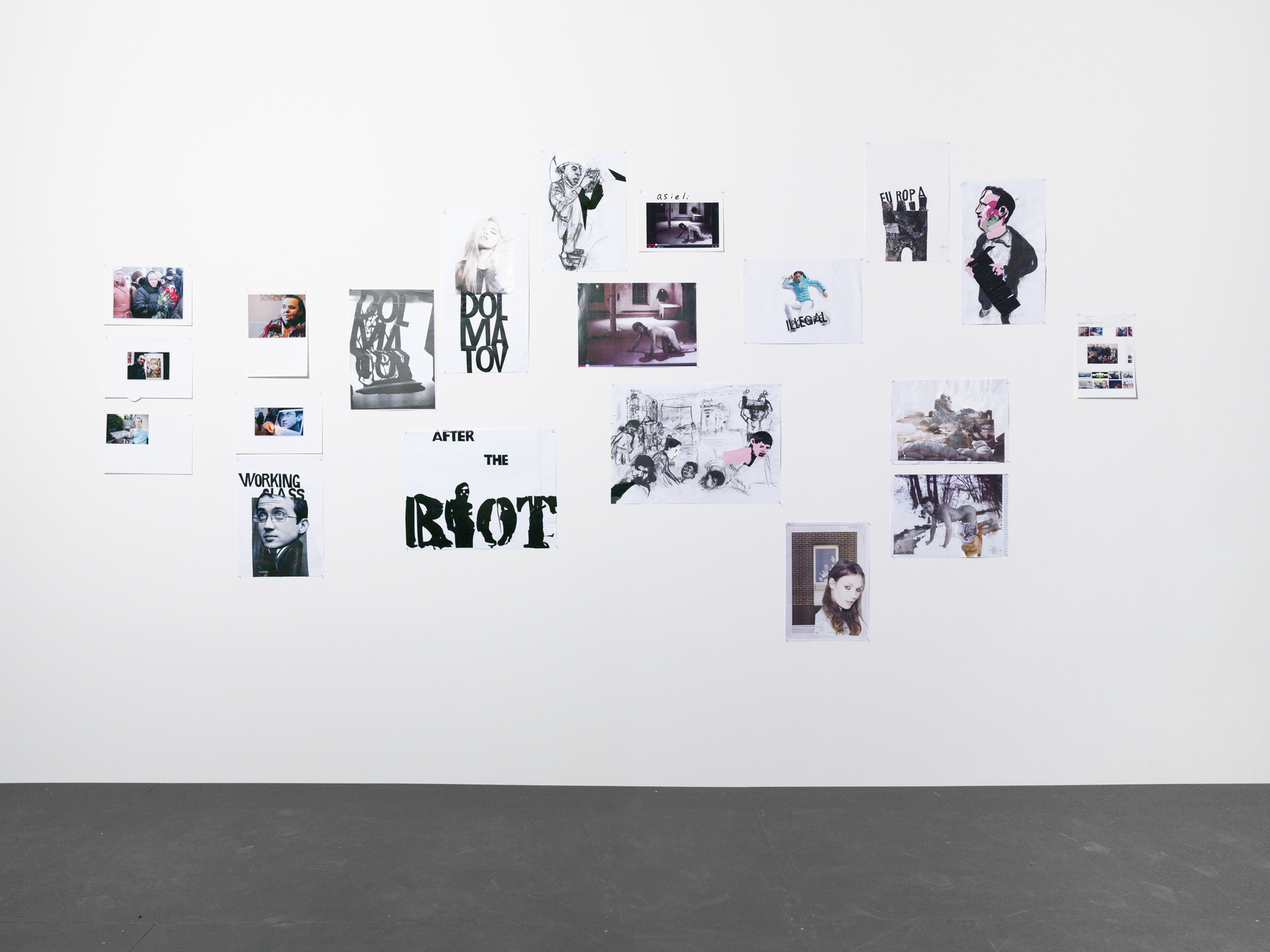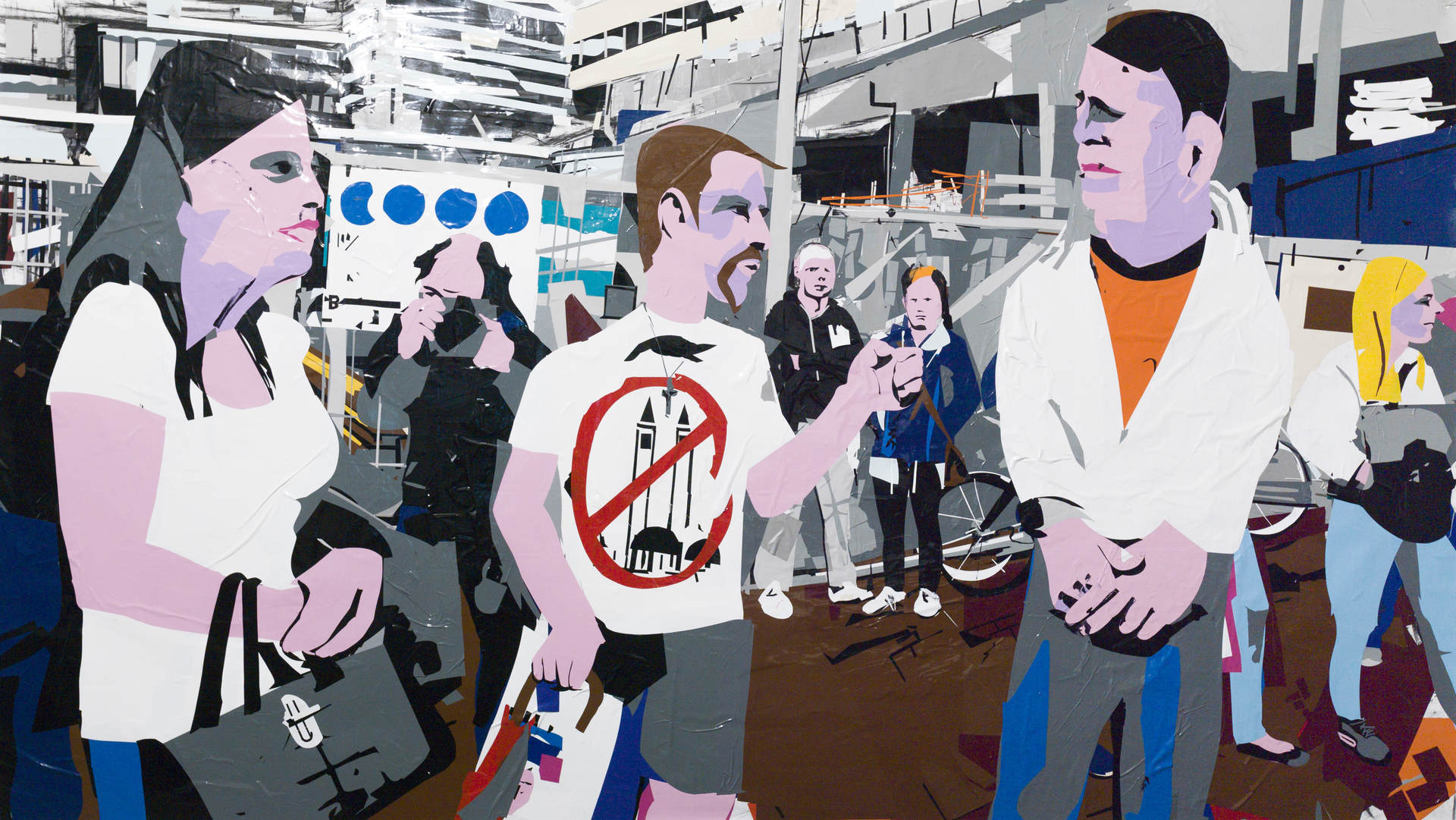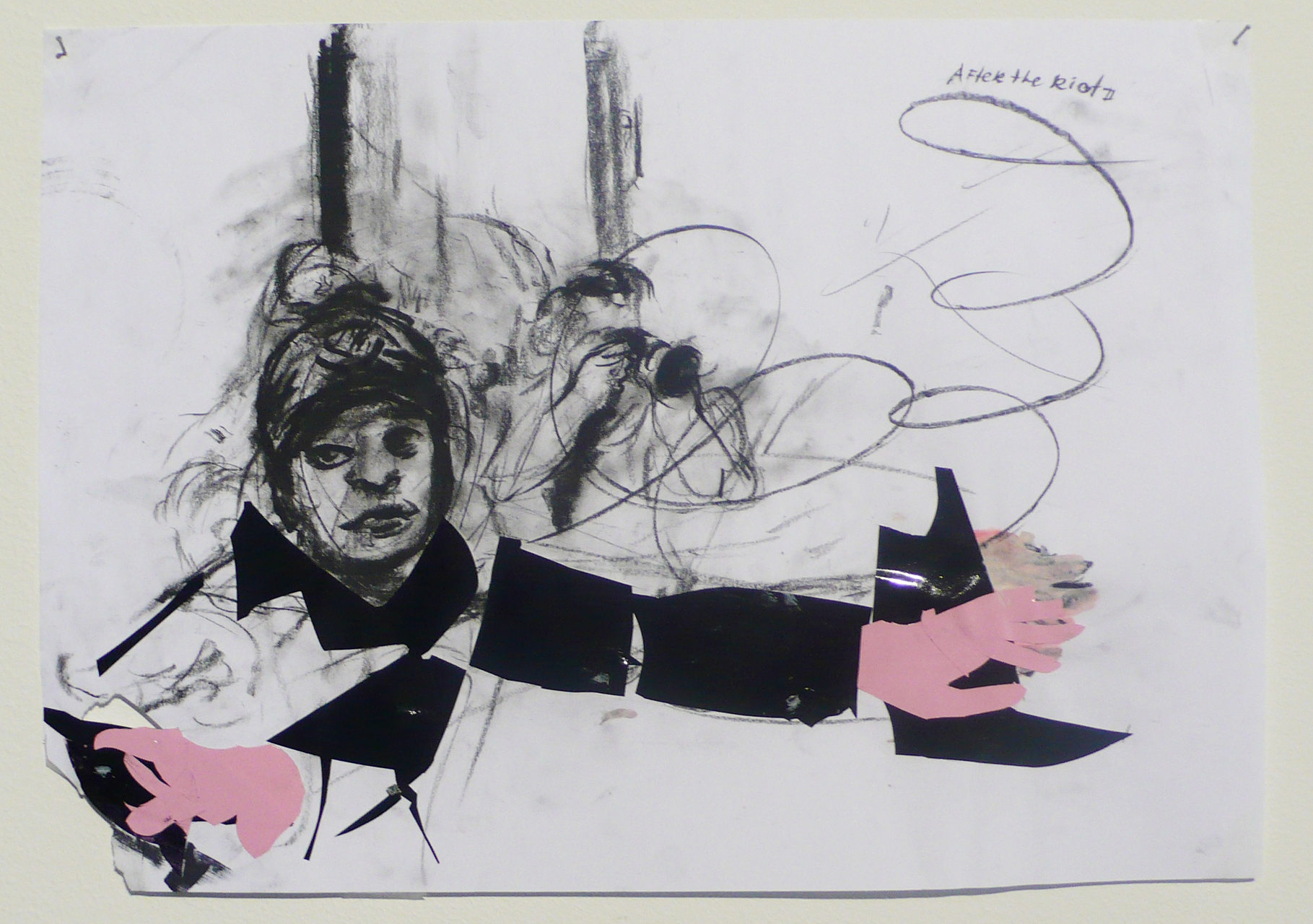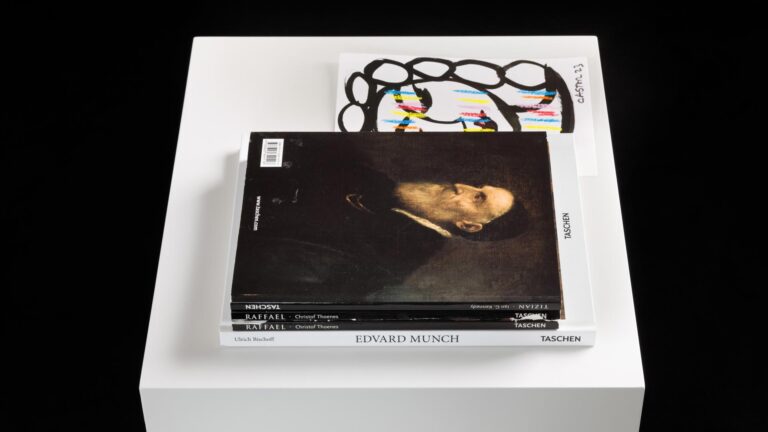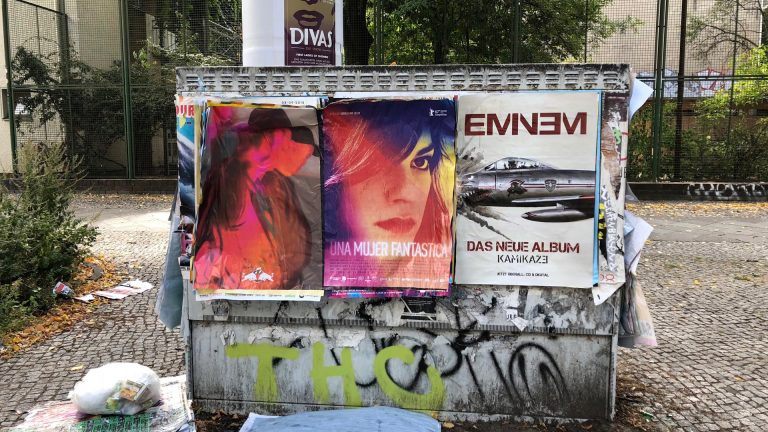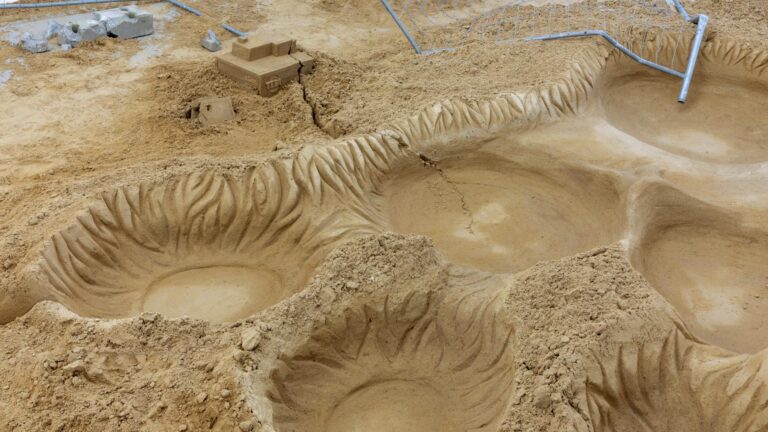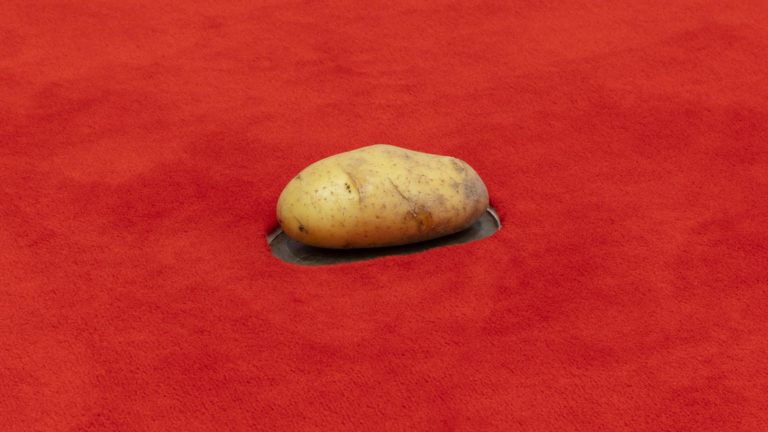Artist: Erik van Lieshout
Exhibition title: After the Riot II
Venue: Galerie Guido W. Baudach, Berlin, Germany
Date: May 1 – July 18, 2015
Photography: Images courtesy of the artist and Galerie Guido W. Baudach, Berlin
In After the Riot II, his third solo exhibition with Galerie Guido W. Baudach, Erik van Lieshout presents a new video installation and works on paper addressing the effects of various contemporary political problems and social conflicts. With reference to concrete examples from his native Holland, and in a unique personal mode that is as engaged as it is confrontational, van Lieshout investigates the relationships between the public and the political spheres and between the individual and society.
The focal point of the exhibition is an expansive platform supporting an open ring of construction-site fencing elements. This ensemble is at once a sculpture and a meeting place. The metal fencing, usually employed as an instrument of exclusion and spatial demarcation, is here used to create a place for contemplation and debate. Installed on the inside of the fencing are projection screens showing the twin-channel video Dog.
Taking the tragic death of the Russian rocket scientist and opposition politician Aleksandr Dolmatov as a case study, Dog addresses the practical consequences of European policies on refugees and asylum. On 16 January 2013, Dolmatov, a well-known critic of Putin who had been seeking asylum in the Netherlands, committed suicide at a so-called ‘detention centre’ near Rotterdam airport. He had just been told that his application for asylum had been rejected and that he was to be sent back to Russia. Shortly after this incident – which, as it later transpired, had been the result of a computer error and would go on to cause a political scandal in which the Dutch minister of justice was requested to tender his resignation – van Lieshout was approached by a local group of human rights activists and asked to design a memorial to Dolmatov. Van Lieshout then attended several of the activists’ meetings, got in touch with a number of refugees and started working on a commemorative performance for Dolmatov that would make reference to Oleg Kulik’s Pavlov’s Dog (1995). At around the same time, though, van Lieshout was working on his contribution to Manifesta 10 in St. Petersburg. It was from raw footage for this work that, in the spring of 2015, he produced the video installation Dog as a memorial to Aleksandr Dolmatov and an artwork that questions the societal influence of the artist.
The presentation of Dog is accompanied here by works on paper in which van Lieshout investigates what happens when xenophobia and religiously motivated radicalism clash. Again, though similar conflicts are by no means rare elsewhere at the moment, the starting point for these works was an actual event in the Netherlands. In the summer of 2014 a group of Dutch nationalists organised an anti-Islamic march in a deprived multicultural district of The Hague. A counter-demonstration evoked extreme acts of violence. The drawings and collages examine the aftermath of these clashes. They show people recuperating, contemplating the situation and talking to each other; people reflecting on what had happened. In capturing this special atmosphere, After the Riot II courts conversation and encounter.
DOG, 2015
DOG, 2015 (video still)
DOG, 2015 (video still)
DOG, 2015 (video still)
DOG, 2015 (video still)
Untitled, 2015
Untitled, 2015
Untitled, 2015
Untitled, 2015

